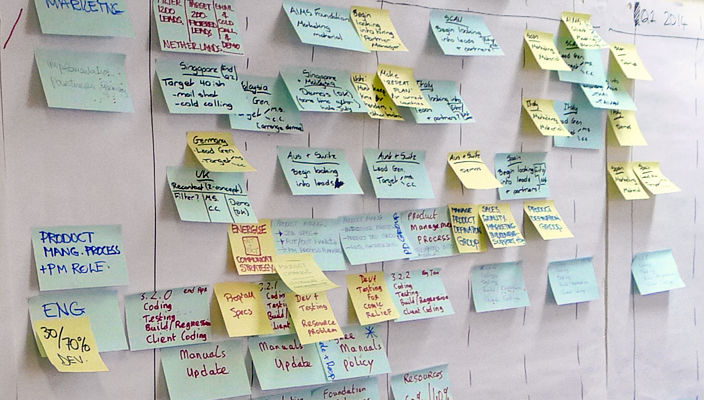Understanding the relationships between a product development team and the business side of an organization can be a pivotal role in the success of a product and by extension, a…

Establishing A Positive Team Identity
Understanding the relationships between a product development team and the business side of an organization can be a pivotal role in the success of a product and by extension, a product manager. In my career, I have always valued the people side of my job above anything else. It is the difference between product adoption / innovation and stagnation. But a necessary component to success is not the product manager specifically but the positive identity of the team building a feature or a specific product.
If you have established the personal relationships with account teams, client leads and the business leaders you get more insight into what clients need and want, true feedback on what the product does well and more importantly, what it doesn’t.
A key thing to understand is that your team, over time, will gain a reputation in an organization. If you far exceed standards of quality, meet (not consistently exceed) deadlines, and provide value to an organization that “identity” will be positive. The opposite is also true. Positive expectations are important and living up to those expectations defines personal, team and company success.
As a product manager, you are the central nervous system of the product and the team. It is more than just being a leader or a people manager (in some roles). Your grace under pressure, how you handle adversity, how you respond in times of perceived failure, all of those define the operational role of product manager as it relates to the team. Engineers look to the product manager about how to handle situations. Setting that example, sets the tone for the team, adding to it’s identity in the organization.
I always want to be the person that business stakeholders want to work with. Provide solutions, not problems or questions. Be invested in the potential success for the company while listening and focusing on the core business problems. Always giving the team credit for success at every point you can. Building trust and establishing relationships into the team and being that bridge to the business. By always diversifying the credit for success and accepting failure as a learning experience, you can create a team identity that is respected in an organization.
By always diversifying the credit for success and accepting failure as a learning experience, you can create a team identity that is respected in an organization.
A true leader in software and product understands more about where the deficiencies are in the team and uses that to his/her advantage. Always evolving the process to fit the environment they are in, not just sticking to some trendy new process that everyone is using. Anyone can go online and read about Agile methodology, or Waterfall or any of the other new and “cutting edge” methods for management but what matters most is the ability to:
- produce quality work
- establish a development pace that aligns with company goals
- constantly advancing the product (fast, iterative development)
- keep developers engaged and focused on short term goals
- keep development leads understanding the long term goals
- learn from failure
Results and production level. That is what defines a team and it’s identity within an organization. As a product manager, you control the positive or negative aspect of that identity. It starts and ends with how you structure, plan and react to situations.



